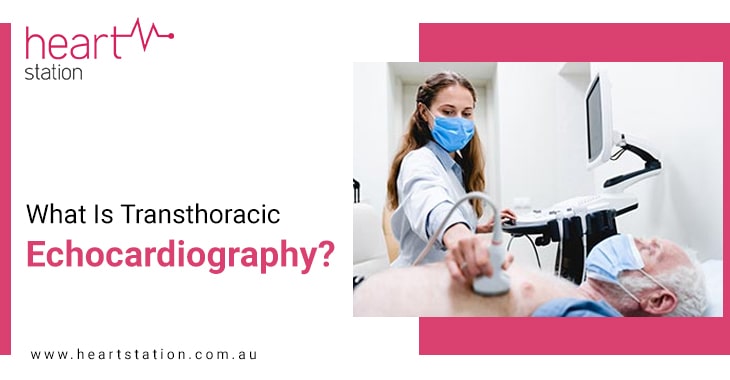The heart, a miraculous organ that beats tirelessly throughout your life, holds the key to our vitality and well-being. In modern medicine, diagnostic imaging techniques have become indispensable for assessing heart health. One non-invasive and painless procedure is Transthoracic Echocardiography, commonly known as an echocardiogram. This powerful diagnostic test utilizes sound waves to create real-time images of the heart’s structures and functions. If you are looking for the best Transthoracic Echocardiography or Transthoracic Echocardiogram centre in Pimlico, Australia, reach out to Heart Station, a leading cardiac diagnostic centre.
At Heart Station, our superior cardiac diagnostic tests, including a Transthoracic Echocardiography, will assist you in detecting, treating, and managing any heart disease. If you want an accurate and safe Transthoracic Echocardiogram, visit us today.
This blog will delve into Transthoracic Echocardiography, exploring its significance, procedure, and role in evaluating heart health.
- Understanding Transthoracic Echocardiography
- The Echocardiogram Procedure
- Types of Echocardiography
- The Importance of Echocardiography
- Benefits of Transthoracic Echocardiography
- Preparation for an Echocardiogram
Understanding Transthoracic Echocardiography:
Transthoracic Echocardiography (TTE) is a widely-used imaging technique that employs high-frequency sound waves (ultrasound) to produce detailed images of the heart’s chambers, valves, and blood flow patterns. It is a safe, non-invasive, and radiation-free procedure that allows cardiologists to assess the heart’s structure, function, and overall performance.
The Echocardiogram Procedure:
A tiny handheld instrument transducer is put on the chest during a Transthoracic Echocardiogram. Sound waves are emitted by the transducer and reflected by the heart’s structures as echoes. These echoes are then converted into real-time images displayed on a monitor. The images provide valuable information about the heart’s size, shape, pumping efficiency, and the condition of the valves and surrounding tissues. Want the best Transthoracic Echocardiography? Contact Heart Station, Australia, today.
Types of Echocardiography:
Transthoracic Echocardiography is the most common type of echocardiography. However, there are other specialized forms used for specific purposes:
- Transesophageal Echocardiography (TEE): The transducer is passed through the esophagus in TEE, providing clearer images of the heart structures. TEE is particularly useful for evaluating heart valve function and detecting abnormalities that may not be visible with TTE.
- Stress Echocardiography: This echocardiography is performed during or after exercise to assess the heart’s response to physical stress. It helps identify areas of the heart that may not receive enough blood flow under stress, indicating potential coronary artery disease.
The Importance of Echocardiography:
Echocardiography plays a pivotal role in diagnosing and monitoring various heart conditions. Cardiologists use it to assess heart function in cases of heart failure, detect valve problems (such as regurgitation or stenosis), evaluate congenital heart defects, and identify abnormalities like blood clots or masses within the heart.
Benefits of Transthoracic Echocardiography:
The non-invasive nature of TTE makes it a preferred choice for heart evaluation. It is safe, painless, and does not expose patients to harmful radiation. Additionally, echocardiograms provide real-time images that cardiologists can immediately interpret, allowing for swift diagnosis and treatment planning.
Preparation for an Echocardiogram:
The echocardiogram procedure typically requires little preparation. Cardiologists may ask patients to avoid eating or drinking briefly before the test. They also advise patients to wear loose-fitting clothing to enable easy access to the chest area.
End Note
Transthoracic Echocardiography is a remarkable diagnostic tool that offers a clear and detailed view of the heart’s structures and functions. By providing valuable insights into heart health without invasive procedures or radiation exposure, TTE has become an invaluable resource for cardiologists worldwide. Whether detecting heart valve abnormalities, assessing heart function, or monitoring heart conditions, echocardiography helps medical professionals make informed decisions and develop personalized treatment plans. If you want the best Transthoracic Echocardiogram done by expert professionals, reach out to Heart Station, Australia.

